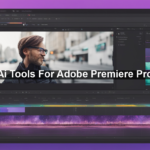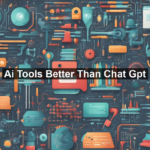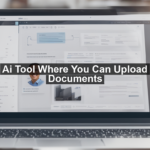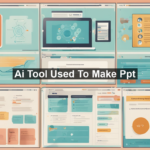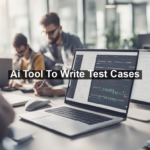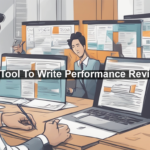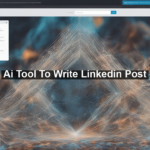Imagine a world where you can instantly transform any image into editable text without the need for tedious typing or transcriptions. Well, welcome to the future! AI tools that extract text from images are revolutionizing the way we interact with the world, enhancing efficiency and breaking down language barriers. In this piece, you’ll uncover how these tools operate and the benefits they bring across various sectors, from business to education. You’ll also get practical tips on choosing the right tools for your needs and explore a few stellar recommendations. These AI solutions are no longer just a glimpse of the future but a significant part of our present toolkit.
How Do AI Text Extraction Tools Work?
AI text extraction tools employ Optical Character Recognition (OCR) technology, which uses algorithms to identify characters in an image and convert them into machine-readable text. Here’s a quick rundown of the process:
- **Image Pre-processing:** The tool enhances the image quality by adjusting contrast, brightness, and removing noise, ensuring more accurate text recognition.
- **Character Recognition:** It identifies individual characters using patterns and features, often comparing them with stored character templates.
- **Text Conversion:** The characters are then assembled into meaningful text, complete with context understanding in more advanced AI models.
Why Should You Use AI Tools for Text Extraction?
The advantages of AI text extraction tools are numerous and can significantly impact productivity and data accessibility. Here are a few key benefits:
Increased Efficiency
Eliminate Manual Data Entry: Organizations can save hundreds of hours by automating the conversion of documents, forms, and handwritten notes into digital format, freeing up employees for more strategic tasks.
Accessibility and Inclusivity
AI text extraction allows for the conversion of inaccessible information into accessible digital formats. This capability is critical in creating inclusive digital spaces, making information available to individuals with visual impairments through text-to-speech applications.
Translation Capabilities
Some advanced AI tools can even help translate extracted text into different languages, supporting global communication and breaking down language barriers. Companies like Google Cloud Vision offer such multilingual support.
How To Choose the Right AI Text Extraction Tool
With numerous options available in the market, selecting the right AI tool for your needs can be overwhelming. Consider the following factors to make an informed decision:
Accuracy
Accuracy should be a top priority when selecting an AI text extraction tool. Tools that frequently misrecognize text can lead to errors that may be costly to fix. Opt for solutions with high accuracy rates and strong performance in challenging scenarios, like low-quality scans.
Integration and Compatibility
Ensure the tool can seamlessly integrate with your existing software and systems. Compatibility with your digital ecosystem will enhance workflow efficiency and reduce disruptions.
Scalability
Consider whether the tool can handle growing volumes of data as your needs expand. Scalable solutions offer flexibility and longevity, supporting both small and large-scale operations.
Recommended AI Text Extraction Tools
Several AI tools have gained notoriety for their efficiency and accuracy. Here are three notable recommendations:
Google Cloud Vision
Google Cloud Vision provides a comprehensive suite for image analysis, featuring robust OCR capabilities. Its cloud-based nature offers seamless scalability, and its advanced language support makes it ideal for multilingual environments.
Adobe Scan
Adobe Scan is a mobile application that combines AI and OCR to transform your smartphone into a portable scanner. Its ease of use and integration with Adobe services make it a perfect choice for individuals and small businesses.
Tesseract
Maintained by Google, Tesseract is an open-source OCR engine praised for its high accuracy and flexibility. It supports numerous languages and can be customized to suit specific needs.
Practical Applications Across Different Sectors
AI text extraction is not confined to a single industry; its applications span across various fields:
Education
Educators use AI tools to digitize textbooks and handwritten notes, making it easier for students to access and search for information. Moreover, text extraction facilitates efficient data organization and retrieval.
Healthcare
In the medical field, AI text extraction enhances patient care by quickly converting handwritten clinical notes and records into electronic health records, improving data management and accessibility.
Finance
Organizations in the financial sector leverage these tools to automate invoice processing, audits, and compliance checks, significantly reducing the risk of human error and expediting data analysis.
The Future of AI Text Extraction
AI text extraction is continuously evolving, with innovations aimed at improving accuracy, speed, and language processing. As machine learning algorithms become more sophisticated, we can anticipate even more seamless integrations and enhanced functionalities. This technology holds the promise of becoming an indispensable tool for automation and efficiency in an increasingly digital world.
By embracing AI tools for text extraction, you unlock new realms of productivity and accessibility, positioning yourself and your organization at the forefront of technological advancements. For those eager to learn more, consider exploring comprehensive resources or engaging with industry forums for insights on the latest developments.


